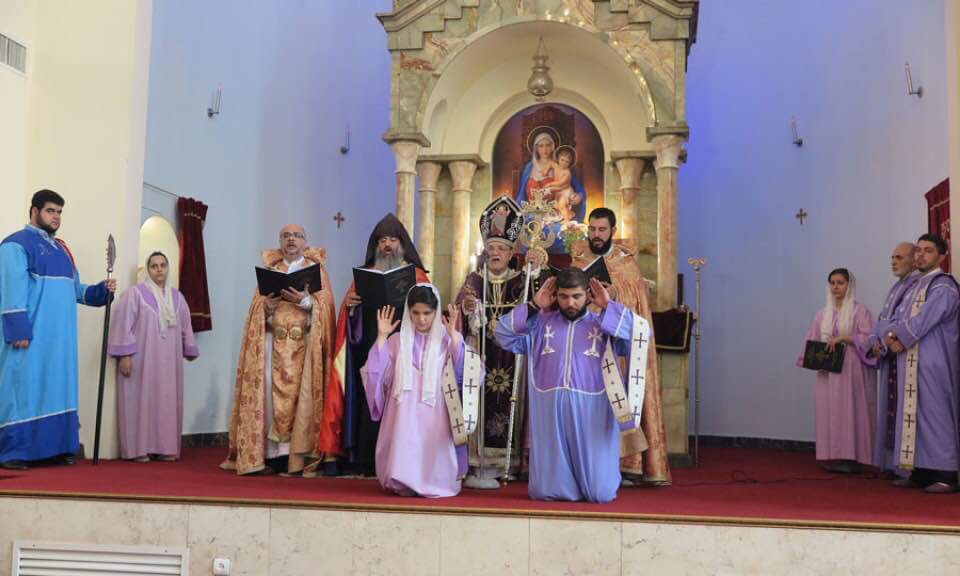
Historic Ordination of a Deaconess in the Tehran Diocese of the Armenian Church
Hratch Tchilingirian | CivilNet.am 12 January 2018 [updated 20.06.2019, 17.08.2022]
The Primate of the Diocese of Tehran (under the jurisdiction of the Catholicosate of Cilicia) ordained a young woman as a deaconess in Tehran’s St. Sarkis Mother Church on September 25, 2017. Even as the office of deaconess had existed in Armenian Church convents for centuries, this was a historic first. It is the first time that a lay woman, not a nun, was ordained a “parish deacon.”
Twenty-four year old Ani-Kristi Manvelian, an anesthesiologist by profession, was ordained -- along with a young man Mayis Mateosian -- by Archbishop Sebouh Sarkissian, the Primate of the Diocese of Tehran.
“What I have done is in conformity with the Tradition of the Church and nothing else,” said Archbishop Sarkissian. This was his personal initiative as a diocesan primate in order, as he explained, “to revitalise the participation of women also in our church’s liturgical life,” adding, “do not be surprised, a woman could also become a servant of the Holy Altar.” (1)
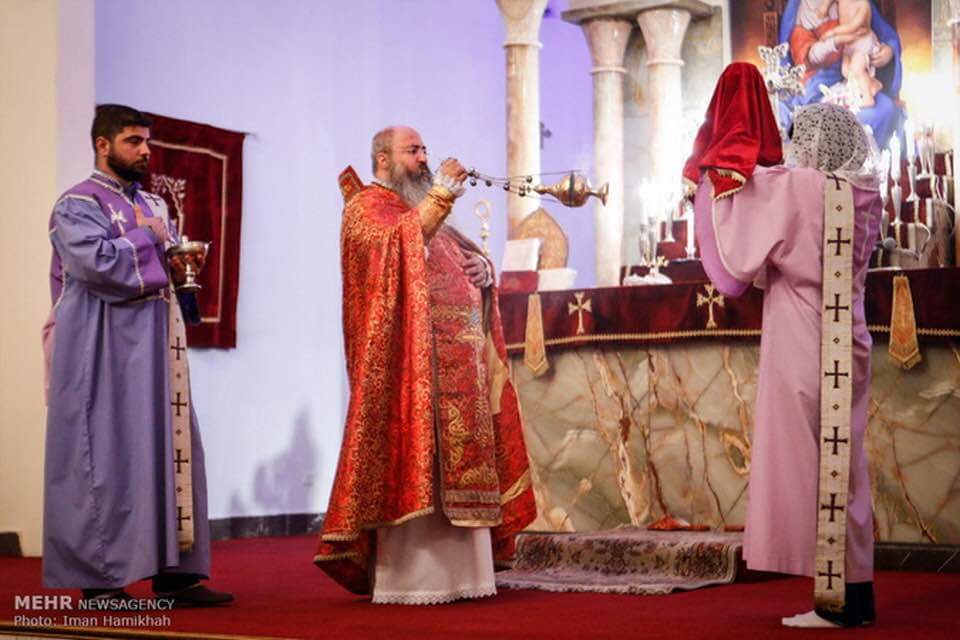
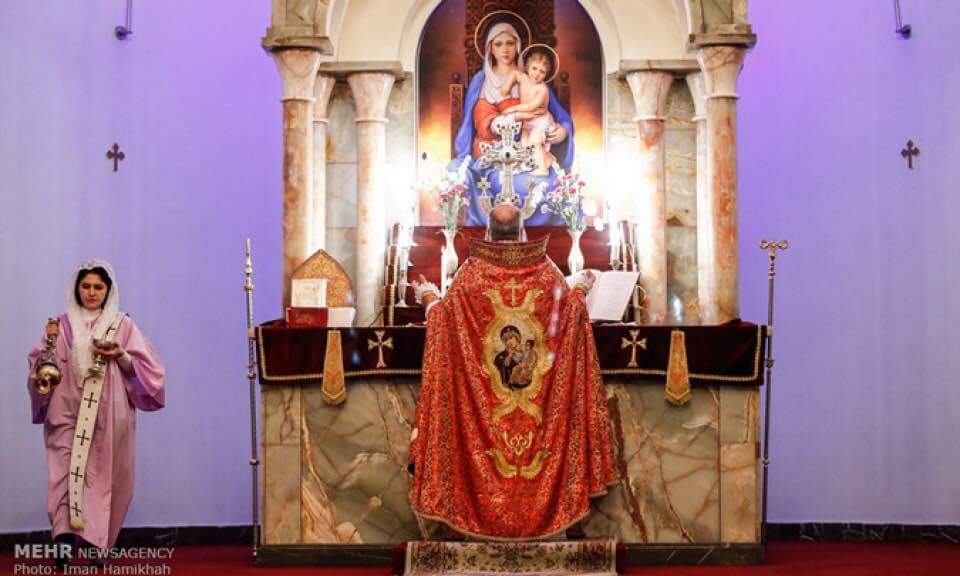
Deaconess Ani-Kristi has been involved in the life of the church in Tehran since she was very young. She used to perform the duties of an acolyte (դպիր) during church services, such as reading the psalms and carrying the ceremonial candle.
In explaining the purpose of the ordination, Archbishop Sarkissian said: “Today, our Church is confronting the imperative of self-examination and self-critique. It is imperative to rejuvenate the participation of the people in the social, educational and service spheres of the Church. It is our deep conviction that the active participation of women in the life of our Church would allow Armenian women to be involved more enthusiastically and vigorously, and would allow them to be connected and engaged. They would provide dedicated and loving service [to the people]. The deaconess, no doubt, would also be a spiritual and church-dedicated mother, educator, and why not, a model woman through her example. It is with this deep conviction that we are performing this ordination, with the hope that we are neither the first nor the last to do it.” (2)
According to the Primate, parish priests in Tehran are watchful and keen to recruit more women who fit the profile of prospective deaconesses.
What is special and novel about Deaconess Ani-Kristi Manvelian's ordination is that she is a "parish" deacon -- that is, she is not a member of a convent or a religious order, like the Kalfayan Sisters in Istanbul or Gayanyants Sisters at Birds Nest in Jibel, Lebanon, who have a few sisters among their ranks and are not ordained deaconesses.
Like her male counterparts in the Armenian Church, if and when Deaconess Ani-Kristi marries, she will continue to serve as a deaconess.
Deaconesses have been part of the Christian tradition from the early years of the faith. There are numerous references in the Epistles and early Church writings.
In the Armenian Church tradition, the development of the office of female diaconate is divided into four historical periods according to Fr. Abel Oghlukian (Manoukian), the author of a study on the subject: (a) 4th-8th centuries in Greater Armenia; (b) 9th-11th centuries in Eastern and Cilician Armenia, where the term “deaconess” is included in the book of ordination (Մաշտոց); (c) 12th century and on, where there are “literary references and rites for the ordination of deaconesses in liturgical texts in Cilicia and eastern Armenia; and (d) 17th century renewal of female diaconate. (3)
The last ordained monastic deaconess in the Armenian Church was Sister Hripsime Sasounian in Istanbul. The late Patriarch Shnork Kalustian of Constantinople ordained Sister Hripsime of Kalfayan Sisters (established in 1866) as a deaconess in 1982, using the canon of ordination used for male deacons (Ձեռնադրութեան Մաշտոց). Damascus-born Deaconess Hripsime was 54 years old at the time. She passed away in 2007. (4) [Update added 17.08.2022] Today, Sister Kayane Dulkadirian is the only Kalfayan Sister left. She is a Stolebearer (Ուրարակիր), not a deacon yet. Like male stolebearers, she serves on the altar during the Divine Liturgy and reads the Gospel, as seen for instance in this video on Sunday, 21 November 2021.
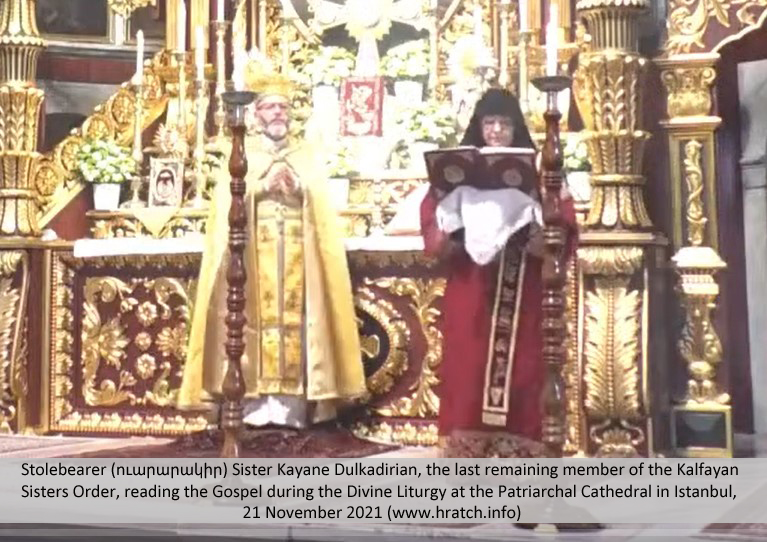
In North America, Seta Simonian Atamian was the first adult women ordained as an acolyte (դպիր), a lower rank, by Archbishop Vatche Hovsepian of the Western Diocese in 1984 at St. Andrew Armenian Church, in Cupertino, California. However, when in 1986 she moved to the East Coast of the United States, she was not allowed by the local diocese to serve on the altar in the Armenian Church. (5)
Even as these ordinations are most welcome steps, the Armenian Apostolic Church has yet to formally restore the office of female diaconate. The prospects remain controversial. (6)
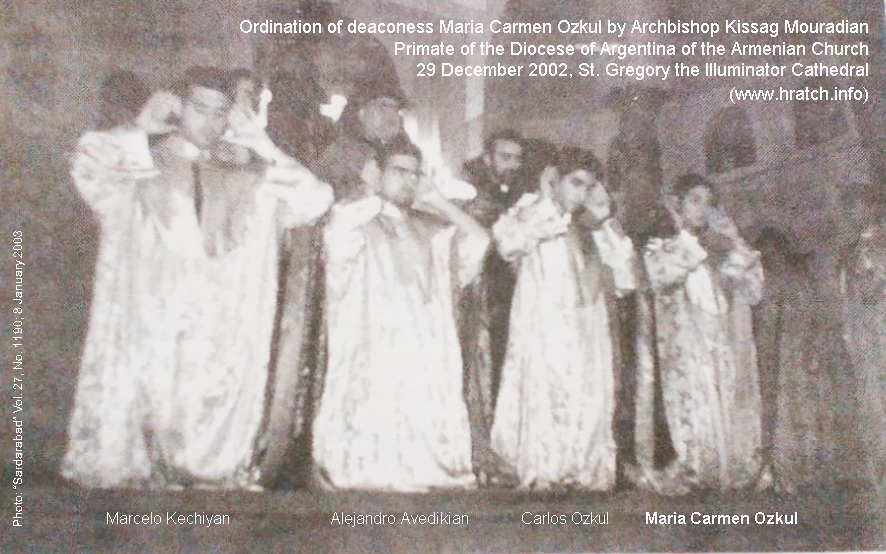
[Update added 20.06.2019] On 29 December 2002, on the Feast of St. Stephen the Protodeacon, the Primate of the Diocese of Argentina (under the jurisdiction of the Mother See of Etchmiadzin), Archbishop Kissag Mouradian ordained 17-years-old Maria Carmen Ozkul, without fanfare, along with three male deacons (Marcelo Kechiyan, Alejandro Avedikian and Carlos Ozkul) in the Cathedral of St. Gregory the Illuminator in Buenos Aires (7). Soon after, he ordained deaconess Mara Pedicino Keuroghlian to serve the Armenian Church in Cordoba. However, the archbishop came under “intense pressure from Etchmiadzin,” as he described when I met him in Buenos Aires (18 June 2019) during a visit to Argentina. Although the move was within his discretionary canonical authority as a diocesan bishop, the powers that be in Etchmiadzin asked him to immediately defrock the women deaconesses he ordained. When Archbishop Kissag refused, the “controversy” escalated to a point where he himself was threatened with defrocking. Eventually, the matter was “resolved” when instead of defrocking the deaconesses, Etchmiadzin accepted that the women would not go on the altar or serve on the altar during the Divine Liturgy. This created an unpleasant and unwelcome atmosphere. One of the deaconesses stopped coming to church and the other continues to serve in Cordoba by singing in the choir and helping the priest in the chancel, not on the altar.
Today the question is how to revive the female diaconate for the pastoral life of local parishes rather than in monastic settings or convents, which are virtually non-existent as viable institutions.
______
(1) See «Ավանդույթի վերականգնում Թեհրանում. սարկավագ Անին» (Սուսան Բադալյան) Հանրային հեռուստաընկերություն, 11 January 2018; https://youtu.be/IXczc-qgPEo; "Alik" https://goo.gl/WLUTsA; also Philippe Sukiasyan's "Ordination d’une diaconesse à Téhéran" in NH Hebdo (Paris) 4 janvier 2018, p. 9-10.
(2) Ալեքս Սրկ. Գալայճեան, «Հայ եկեղեցւոյ սարկաւագուհիները երէկ եւ այսօր», ("Armenian Church Deaconesses: Yesterday and Today"). «Ժամանակ», 23 Դեկտ. 2017, էջ 3.
(3) Fr. Abel Oghlukian (Manoukian), The Deaconess in the Armenian Church: A Brief Survey. New Rochelle, NY: St. Nersess Armenian Seminary, 1994: 12-13. http://oxbridgepartners.com/hratch/index.php/research-library/armenian-church/515-the-deaconess-in-the-armenian-church
(4) For an extensive discussion of deaconesses in the Armenian Church, see Fr. Abel Oghlukian study in note 3 above and Knarik Meneshian’s article in The Armenian Weekly, https://armenianweekly.com/2013/07/06/a-nearly-forgotten-history-women-deacons-in-the-armenian-church/
(5) "On the Ordination of the First Woman Acolyte" (1988) and "Seta in her own words at the AIWW conference 1996" at https://armodoxy.blogspot.co.uk/1988/06/ordination-of-woman-acolyte-in-armenian.html?q=seta (10 January 2018).
(6) For the contemporary discussion of the issue of female deaconate in the Catholic Church, see Giancarlo Pani SJ, “Women and the Diaconate”, La Civilta Cattolica, 12 April 2017; https://laciviltacattolica.com/women-and-the-diaconate/#_ftnref33 (19 October 2018); for the Orthodox Church perspective, see St. Phoebe Center for the Deaconess, https://orthodoxdeaconess.org/.
(7) See Sardarabad, Vol. 27, No. 1190, 8 January 2003. I am grateful to Vartan Matiossian for providing an electronic image of the news report and photo published in Sardarabad.
* For ordination of deaconesses in the Greek Orthodox Patriarchate of Alexandria, see The One-Year Anniversary of the Ordination of Deaconess Angelic; Patriarch Theodoros of Alexandria performs first consecration of deaconesses; and concerns raised over the decision of Metropolitan Seraphim of Zimbabwe.


